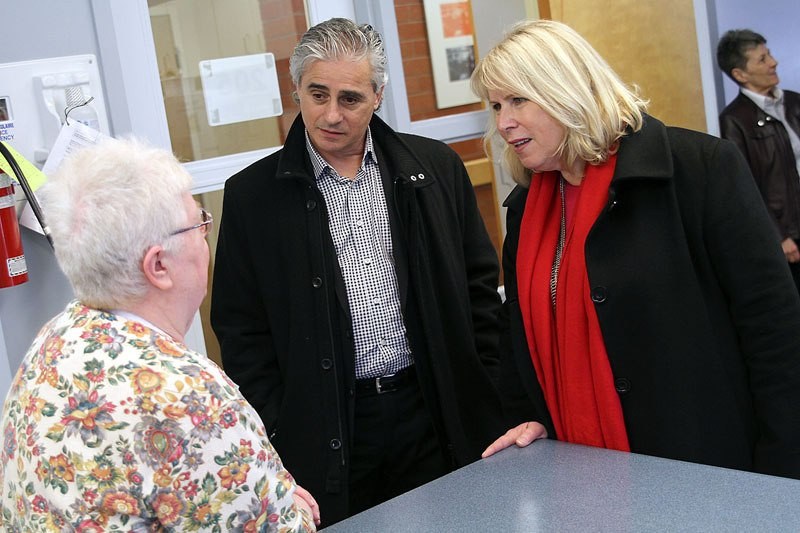The province put up $14 million in an effort to end the gridlock that has been crippling the region's hospital.
Ontario's Health Minister Deb Matthews on Friday arrived at the Thunder Bay Regional Health Sciences Centre with her pocketbook open, promising a 10th anniversary gift to end a problem that’s plagued the hospital since it first opened in 2004.
The funding, which will be spent over the current fiscal year as well as next, is only the first step in targeting over-capacity issues.
“This is the beginning. This is a short-term plan,” Matthews said to local media after the formal announcement.
“There is more that will need to be done down the road but this will significantly reduce pressures in the hospital.”
Matthews arrival and announcement follows a recent fire code violation, which the hospital received after it put patients in hallway alcoves as a short-term solution to its capacity shortfalls.
While the ministry was aware of the fire code violation, Matthews said Friday's funding announcement was not a direct response and insisted the process behind the funding had already been underway before then.
The proposed solution sees the addition of 26 new beds at the Lakehead Psychiatric Hospital to treat people with long-term illnesses and disabilities as well as funding for 17 more spaces at the former McKellar Hospital to allow seniors and people in need of care to remain independent.
In addition, there will be funding to staff 10 more acute care beds at the regional which is expected to be able to treat 600 more patients per year.
There is also more than $4 million earmarked to expand a nurse outreach program through the NorWest Community Health Centre. That program is estimated to provide home care for up to 500 seniors and people with complex needs.
According to Matthews, the roots of the over-capacity problems at the hospital originate from a system that has limited alternatives for people seeking care.
Thus, a solution involving community partners such as the Local Health Integration Network and St. Joseph’s Care Group are vital.
“We want people to access the care they need in the most appropriate place. A lot of people come to the hospital but they don’t really need the hospital, they need care,” she said.
“When we have people in hospital that are designated (alternate level of care) they don’t need to be here and they don’t want to be here. We need to build the capacity elsewhere so people that do need to be in the hospital can come.”
Tracy Buckler, president and executive director of St. Joseph’s Care Group, said the addition of beds at the Lakehead Psychiatric Hospital will be temporary until the construction of the Centre of Excellence for Integrated Senior Services is complete.
With the current options available, this is the best way to create flow through the system and keep patients out of the hospital.
“This is a great temporary solution for 26 beds to be able to move people into a location that isn’t in hospital,” she said.
“It’s a temporary solution; it’s not ideal. The ideal solution would be to have sufficient long-term care bed capacity and that’s the long-term solution we’re working on. For a temporary solution, there is absolutely no other capacity in the system.”
The announcement was welcomed by Dr. Stewart Kennedy, hospital vice-president of medical and academic affairs, but he was cautious in response to whether this could be the cure to gridlock.
He also admitted the funding might have been overdue but placed the onus on local entities for taking time to create a detailed solution to bring to the province.
“We could have used this announcement a year ago but we had to get our act in order here in Thunder Bay,” Kennedy said. “What we learned over the past years is if we bring solutions to the Ministry of Health they’re more receptive than if we’re bringing problems.”
The announcement also outlined a plan to add 10 full-time and 14 temporary emergency room doctors.
Those full-time positions will bring stability to a department that has had to rely on the use of temporary locum doctors.
Kennedy said the hospital has already been able to recruit three new full-time doctors as of July 1, with the expectation of adding five each year for the next two years.
Thunder Bay Regional saw more than 105,000 visits to its emergency room in 2013.
